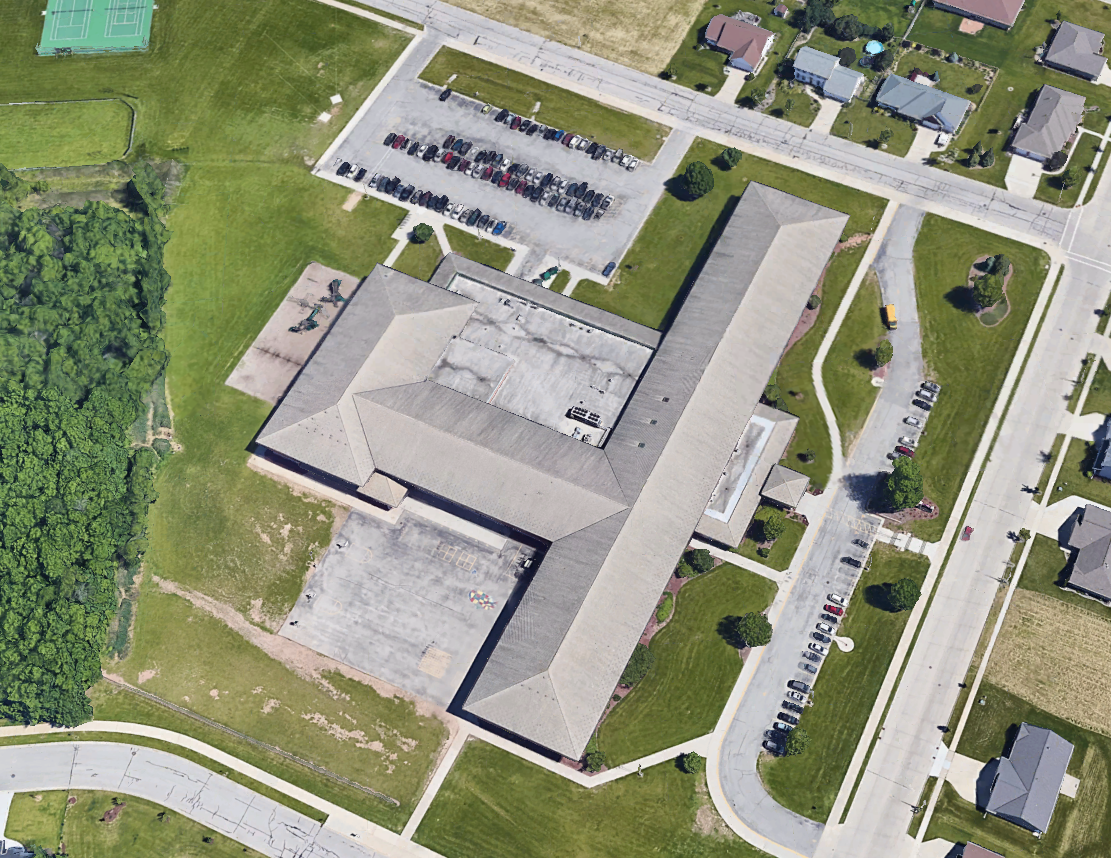Identifying, prioritizing, and budgeting for infrastructure improvements and maintenance needs can seem like a never-ending process, especially if you’re managing multiple schools and facilities but dealing with limited funds. Our experts developed this list to help you efficiently build your budget, effectively prioritize your maintenance needs, and keep your sanity in the process.
Identify Priority Areas Using Tools You Already Have
When establishing your budget early-on, tools like Google Earth and/or your GIS application can go a long way in helping you identify the above ground assets that need the most attention. Starting with the big picture first will allow you to prioritize smaller items with more confidence later in the budgeting process.
Google Earth Aerial
Focus on big ticket items first
It can be easy to dig too far into the weeds and try to identify every small part of your maintenance project that needs attention. In our experience, focusing the majority of your budgeting efforts on the big ticket items and including a contingency for unknowns and smaller maintenance issues will save you a significant amount of time, and still give you an accurate budget.
Big ticket items MAY include:
Asphalt
Concrete sidewalks and aprons
Curb and gutter
Storm sewer
Storm water management
Don’t Ignore Utility Pipes and Structures
The maintenance needs of storm, water, sanitary, electrical, and other utility pipes and structures can be easy to overlook, especially in comparison to large, visible assets like parking lots. However, these structures still deteriorate over time, and staying on top of utility rehabilitation will save your school time and money by avoiding emergency replacements in the future.
Budget for Storm Water Device Maintenance
The cost of storm water management device maintenance is often overlooked during budget season. These devices need ongoing attention to function properly, and it’s likely that your school agreed to a “maintenance agreement” with your municipality when the device was installed. Keeping up with inspections and maintenance now will allow you to avoid costly device replacements later. We’ve developed a storm water device maintenance best practices video to help you.
Tips for Storm Water Device inspections
Ensure all devices are working correctly and there is no erosion
Biofilters:
Ensure outfall is not clogged
Remove trash
Ensure engineering soil is draining properly
Remove weeds
Porous pavement:
Ensure pavement is still draining properly
Inspect for surface defects/cracks/deformation
Vacuum twice per year
Wet ponds:
Ensure outfall is not clogged
Remove trash
Ensure engineering soil is draining properly
Remove weeds
Check sediment depth
Account for Permit Fees
If your project will require permits or engineering services, don’t forget to account for those costs in your budget. Typically, 5-20% of the project cost will cover these items, depending on the scope and cost of construction services.
Review Past Project Pricing
When you’ve finished your budget, it can be helpful to take a step back and compare it to the costs of previous projects. Is there anything that seems off? Don’t forget to account for inflation (2-3% is a good starting point). The costs associated with similar projects should not vary significantly year over year. If you’re finding large discrepancies, you may want to consider contacting an expert to make sure you’re budget is as accurate as possible.
Learn More
If you have questions on how to accurately budget for your school’s infrastructure and maintenance needs, or if you would like to skip the steps above and have our experts do the nitty gritty work for you, please contact one of our experts today!
About the Author
Colin Meisel, P.E.
Colin has more than 15 years of commercial, industrial, and education land development project experience utilizing both traditional and design-build delivery methods. His attention to detail and excellent project management skills keep his projects on-time and on-budget.









